Many reviewers snicker that the Mini Countryman isn’t very . . . mini. And they’re right – and wrong – at the same time.
Compared with the original Mini Cooper hatchback, the Countryman is enormous. Two feet longer, almost – and nearly half a foot taller.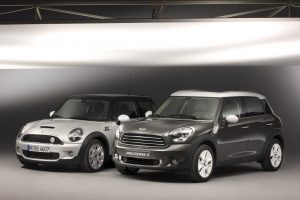
But it’s still pretty mini compared with most “compact”-sized cars. This largest of all Minis is about half a foot shorter end to end than something like a Mazda3 hatchback as a for- instance.
It’s roomier inside, too.
And it’s still uniquely cute – despite the growth spurt.
WHAT IT IS
The Countryman is the least mini Mini.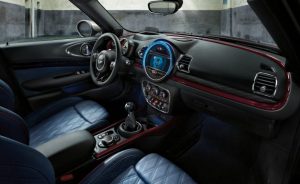
It’s a five-door wagon that looks like the mini Mini, but scaled up by about 40 percent. It’s longer, wider and much taller, has almost eight inches more backseat legroom – and about twice as much cargo capacity behind its back seats.
It’s similar in size and general layout to the Fiat 500L wagon – which is the upsized version of the Fiat 500 hatchback – but unlike the Fiat, the Countryman can be ordered with an engine appropriate to its size (and weight) as well as a manual transmission (the Fiat is automatic only) and the option to buy all-wheel-drive, which the 500L doesn’t offer.
The Countryman also manages to remain small-car cute even though it’s bigger – unlike the 500L, which grew up all Macaulay Culkin.
Prices start at $26,600 for the base front-wheel-drive trim with a 1.5 liter turbocharged three-cylinder engine and six-speed manual transmission.
A more powerful 2.0 liter four cylinder engine is standard in S trims, which sticker at $31,200 to start for one with a manual transmission and $31,700 for an S with the ALL4 all-wheel-drive system. An eight-speed automatic is optional.
An even more powerful version of the 2.0 liter engine – along with suspension and brake enhancements and different trim inside and out – is available in the high-performance John Cooper Works (JCW) version of the Countryman.
It stickers for $37,800.
There is also a wild card version – a plug-in hybrid version. It combines the standard 1.5 liter engine with an electric motor and battery pack, to give the power/performance of the Countryman S with the 2.0 liter engine but with the gas mileage of the base-engined (1.5 liter only) Countryman.
It stickers for $36,800 and comes standard with all-wheel-drive.
The Fiat 500L has the advantage of a much lower price – $20,995 to start, topping out at $23,895 – and also beats the Countryman on cargo capacity – but comes up empty handed as far as drivetrain options and the intangible Cute Factor that the less-mini Mini has in abundance, its upsizing notwithstanding.
Fiat also offers the 500X – which does offer an engine upgrade and AWD – but its backseat is much more cramped, as is the cargo space behind its backseats. It is, however, a cheap date; even cheaper than the 500L: $19,995 to start for the base trim with FWD and manual transmission; $23,800 with the upgrade 2.4 liter engine and AWD.
WHAT’S NEW
In addition to the availability of the JCW performance package and the new hybrid version, all versions of the 2018 Countryman get a few interior tweaks, including an updated gauge cluster and toggle controls.
The bad news, if you’re a gearjammer type, is that the manual transmission is now limited to the base FWD trim with the 1.5 liter engine and the much more expensive S and JCW trims with the ALL4 all-wheel-drive system.
Last year you could buy a FWD S with the six-speed manual. But – cue Inspector Cleauseau – not anymore.
WHAT’S GOOD
Less mini relative to other Minis – but still mini relative to other cars.
Multiple drivetrain choices.
In addition to the space, the Countryman also has clearance – 6.5 inches – which (along with the ALL4 all-wheel-drive) makes this mini a good snow-day car. (The 500X is good in the snow, too – but it’s not nearly as quick – and far less sporty.)
Unlike the Mini hatchback/sedan, the Countryman doesn’t fit pretty much anywhere a motorcycle fits.
Prices aren’t mini, either.
A loaded JCW Countryman can cost north of $40,000. Even the base FWD trim – at almost $27k to start – is nearly $6k more expensive than a base-trim 500L (and about $3k higher than the price of a loaded, top-of-the-line 500L).
Central touch screen infotainment system is snarky looking but can be frustrating to use.
The Countryman’s drivetrain portfolio doubles to four this year.
There’s the standard 1.5 liter engine – a turbocharged three-cylinder engine – which makes 134 hp and 162 ft.-lbs. of torque almost as soon as you key (or rather, toggle) the engine to life. It’s all on tap at 1,250 RPM – which is good, because the Countryman is far from light – a bit over 3,300 lbs. at the curb for the FWD version. Which is about 700 pounds heavier than the Mini hatchback (which comes standard with the same engine).
You can pair this engine with either the standard six-speed manual or (optionally) an eight speed automatic with driver selectable modes and manual shift control. You can also choose FWD or the optional ALL4 all-wheel-drive system.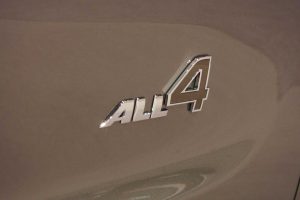
Either way, it takes the 1.5 liter-equipped Countryman just over 9 seconds to get to 60.
EPA says 24 city, 34 highway for the FWD version with manual transmission, 22 city 32 highway for the ALL4 AWD/automatic-equipped version.
Next up is the S – which upgrades you to a 2.0 liter four cylinder, also turbocharged – and making 189 hp and 207 ft.-lbs. of torque. You can go manual or automatic – but (unusually) the automatic is standard with the lower-priced FWD version while the pricier (by $500) ALL4 version of the S comes standard with the manual.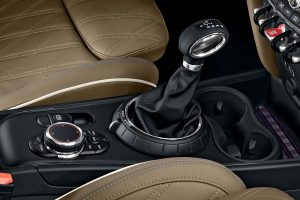
Either way, this version of the Countryman is much speedier. The zero to 60 run is reduced by 2 seconds, to the low sevens – and there is almost no at-the-pump penalty to pay. The FWD Countryman S rates 22 city, 32 highway; with the All4 AWD, the figures are only negligibly worse: 21 city, 31 highway.
Next up is the JCW-ized version of the 2.0 liter four. More turbo boost and other tweaks up the underhood ante to 228 hp and 258 ft.-lbs. of torque at 1,350 RPM.
You can go manual or automatic – but the JCW version of the Countryman comes only in AWD form.
Performance is pretty spectacular: Zero to 60 in 5.9 seconds and a top speed in excess of 140 MPH. Once again, there’s not much price to pay . . at the pump. EPA says 20 city, 29 highway – which is only about 5 MPG off the pace of the base Countryman with the 1.5 liter engine.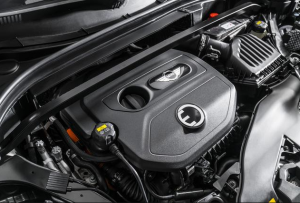
Fourth up – and splitting the difference – is the new hybrid Countryman. The 1.5 liter engine is paired with a 7.6 kilowatt battery pack and electric motor which together approximate the power/performance of the non-hybrid Countryman S while delivering approximately the same fuel efficiency as the base/1.5-liter-only Countryman.
This version can also go about 12 miles on battery power alone and features plug-in-capability, so – theoretically – you could make short hops without burning any gas at all. This version of the Countryman comes standard with AWD – with the electric motor driving the rear wheels – and is automatic only.
It also uses a specific-to-this-model six-speed automatic, not the eight-speed automatic that’s available in the non-hybrid versions.
Size does matter – and that goes both ways.
The Mini hatchback’s small size is a huge advantage in urban and suburban settings, where its barely-longer-than-a-motorcycle dimensions allow it to slip into parking spots almost no other car could squeeze into. And you can exploit holes in traffic that few other cars would dare to.
But on the highway – among the Kenworths – the Mini can feel awfully . . . mini. Strong crosswinds buffet it, a function of both its small size and its light weight.
The Countryman’s larger size – and greater weight – are advantages on the open road, among the leviathans. Its much longer wheelbase (105.1 inches vs. 98.2 for the mini Mini) is also a help here. It may not be able to pirouette a U turn on one tire – as the regular Mini feels like it can do (and almost actually does do) but it is more relaxed at 80 on the Interstate; fewer minor steering inputs are needed to keep it in its lane – and it reacts less hair-trigger to steering inputs.
Its additional ground clearance (6.5 inches) also means it can go places and deal with conditions the lower-to-the-ground Mini isn’t set up to deal with.
The Countryman is more at home in wide open and rural spaces; the mini Mini is – like its iconic British namesake – a car that was conceived with narrow European streets and urban back alleys in mind.
And unlike its two most-similar-in-concept rivals, the Fiat 500L and 500X, the Countryman has the power to compensate for its additional size and weight. The upsized 500L has to make do with the same 1.4 liter, 160 hp engine used in the much smaller – and far lighter – 500 hatchback.
The 500X does offer a larger (2.4 liter) engine but it hardly makes more power (180 hp) than the standard 1.4 liter engine and it comes only with an automatic transmission.
But – going deeper – the Mini is really a BMW.
All Minis are BMWs. Made by BMW – and descended from common BMW ancestors. The Countryman’s ancestor – its fraternal twin, actually – is the BMW X1. You may have noticed that the S and JCW versions of the Countryman use the same 2.0 liter engine that powers the X1 (tuned to the same 228 hp in the JCW version of the Countryman).
How do you say Oh, Behave! in German?
What does translate is the Countryman’s BMW-esque verve in the curves.
Like the X1, being on the taller side doesn’t result in top-heavyness. The tires can be made to squeal if you work at it – but it does take work. Curves posted 35 taken at 60 will get you there. You’ll get there a lot sooner in the 500L – and the 500X (which is really an SUV – a re-skinned Jeep Renegade – and so it’s a little unfair to fault its high-speed cornering prowess).
The S and JCW versions have fairly stiff rides, however. On this count, both the 500L and the 500X score higher. They are not nearly as fun to drive when you are in the mood to drive. But when you are on a long schlepp – cruise control set and more attuned to whatever’s tuned on the stereo – they have their merits as well.
AT THE CURB
It’s easy to outgrow cute. Think Hollywood child stars.
But the growth spurt was necessary. As cute as the original Mini is, it is very . . . mini. While it is surprisingly spacious up front, the Mini hatchback’s back seats are cruel, and not only in terms of the minimal leg (30.8 inches) and headroom (36.9 inches). The standard Mini’s roofline (55.7 inches) is almost six inches lower the Countryman’s (61.3 inches) and that means ducking down to get into the thing.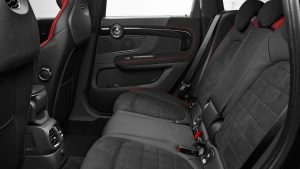
There is also not much room for stuff if you manage to squeeze people in the mini Mini’s back seats. It has only 8.7 cubic feet of cargo capacity with the second row in place. You can almost quadruple that (to 34 cubic feet) by laying the second row flat but now you’ve got a two-seater.
This works ok for young singles and couples without kids – the mini Mini’s natural audience. But when kids enter the picture – or you need to be able to carry people and stuff at the same time – the Countryman works much better.
It has 37.6 inches of backseat legroom and even with the backseats in place, you can carry more than twice as much stuff because there’s twice as much space (17.6 cubic feet) behind them. With the second row folded, the available space expands to 47.6 cubic feet.
The 500L has more cargo room both behind the second row (22.4 cubic feet) as well as with the second row folded flat (68 cubic feet) and its backseat legroom is close (36.7 inches). But remember the curse of Too Much Weight – and Not Enough Engine. The 500X has a bit more engine – but a lot less backseat legroom (34.8 inches) and only 12.2 cubic feet of cargo capacity behind its backseats.
These are the tangibles – things you can measure and compare objectively. The intangibles are another matter.
Like the eponymous Mini, the Countryman has a cheerful look, inside and out. Almost everyone seems to like these things and no wonder. They are cute – even the larger Countryman – and the flair isn’t limited to the British bulldog bodywork.
Inside, a cozy and retro-themed but also modern cabin, with classic ’60s Mini flourishes such as the chrome toggle switches for various functions and the speedo and tach that look like aftermarket gauges bolted to the steering column with radiator hose clamps like they did it in the ’60s, but not cheesy looking.
The large central touchscreen mimics the design of ’60s Mini’s, too – though of course back then they did not have LCD touchscreens.
All trims – except the hybrid – get a full-length panorama sunroof, run-flat tires and a heated windshield wiper system which will make you say Oh, Behave! (again) come winter. If you buy the optional ALL4 AWD system, you also get three-stage heated seats.
These get hot, too – not just warm!
Unfortunately – mysteriously – a heated steering wheel isn’t offered. 
It is one of the few things not offered. Like all Minis, there is a wealth of factory and dealer-available stuff you can order – or add – to make your Countryman unique. Or at least, uniquely yours.
Just be careful about checking off too many boxes – unless your bank balance isn’t mini. A loaded Countryman S – or Countryman JCW – can sticker out for more than $40k – which is several k more than a BMW X1.
Of course, the X1 isn’t nearly as cute.
The hybrid version of the Countryman is interesting from a technical point-of-view but the economics of it are debatable – at least for as long as gas remains pretty cheap. It’s about a $5k bump up from the price of the Countryman S to get into the Countryman hybrid and while the hybrid is quick, it’ll take a long time to earn back that $5k extra you spent on gas you didn’t burn.
A diesel option would make more sense, but Uncle’s jihad against compression-ignition engines has made BMW (whoops! Mini) and pretty much everyone else extremely leery about offering them for sale here in the Homeland.
Even though they are available in BMW’s homeland. Britain, too.
THE BOTTOM LINE
Getting bigger – without getting gawky – isn’t easy. Just ask Macaulay Culkin.
Or, Fiat.
. . .
Got a question about cars – or anything else? Click on the “ask Eric” link and send ’em in!
If you like what you’ve found here, please consider supporting EPautos.
We depend on you to keep the wheels turning!
Our donate button is here.
If you prefer not to use PayPal, our mailing address is:
EPautos
721 Hummingbird Lane SE
Copper Hill, VA 24079
PS: EPautos stickers are free to those who send in $20 or more to support the site. Also, the eBook – free! – is available. Click here. Just enter you email in the box on the top of the main page and we’ll email you a copy instantly!
















Bizarre footnote to this story!
A few blocks away from my house a late-model Mini Countryman caught on fire, became completely engulfed, and burned to a shell in a home driveway. When I saw it late in the evening after dark, the front end was already fully involved and I called 911. The occupants of the house ran out and moved an older pickup that was parked close to the Mini just before the fire department arrived. No idea what caused the fire, but seeing a newer car burning up is rare.
That car shore has a purty mouth
https://pics.me.me/looking-at-your-future-like-bo-thnojob-macaulay-culkin-is-2015536.png
JCW may stand for John Cooper Works, but my mind kept going to JC Whitney.
Fiat needs a lot more going for it than just being cute.
Clubman may be selling, but it would sell even better if it weren’t so ugly.
Hi Mike,
Looks, of course, are subjective. I don’t find the Countryman ugly. The Fiat 500L isn’t a bad little car, but it’s ungainly-looking, somehow – again, to my eyes.
There’s no accounting for taste.
Hell, look (if you can stand to) at an Escalade… and they sell scads of them.
The Countryman’s exterior is terminally overwrought with almost every styling cliche in the book. Haven’t seen a car body so unappealing since, well….the Aztec.
The original Clubmans (Clubmen?) were fairly cute. Sadly, they have evolved into one of those cars I would never, ever want to be seen in.
Hi Mike,
And yet, they sell!
Fiat, on the other hand…